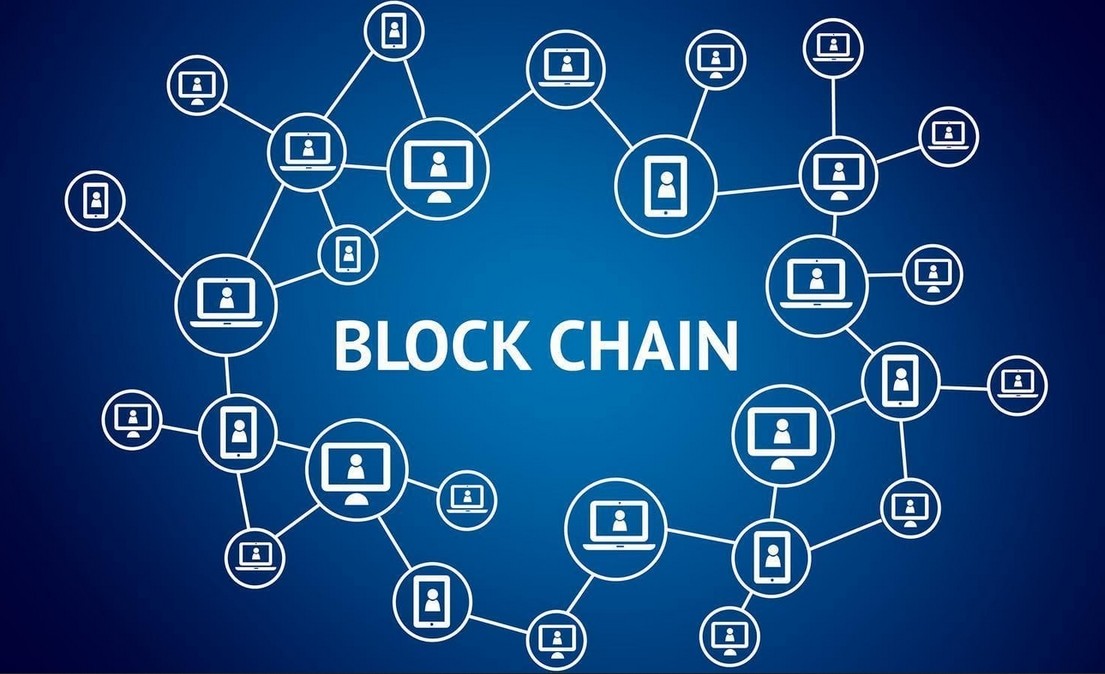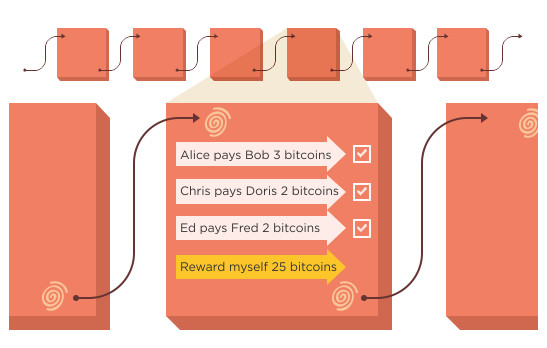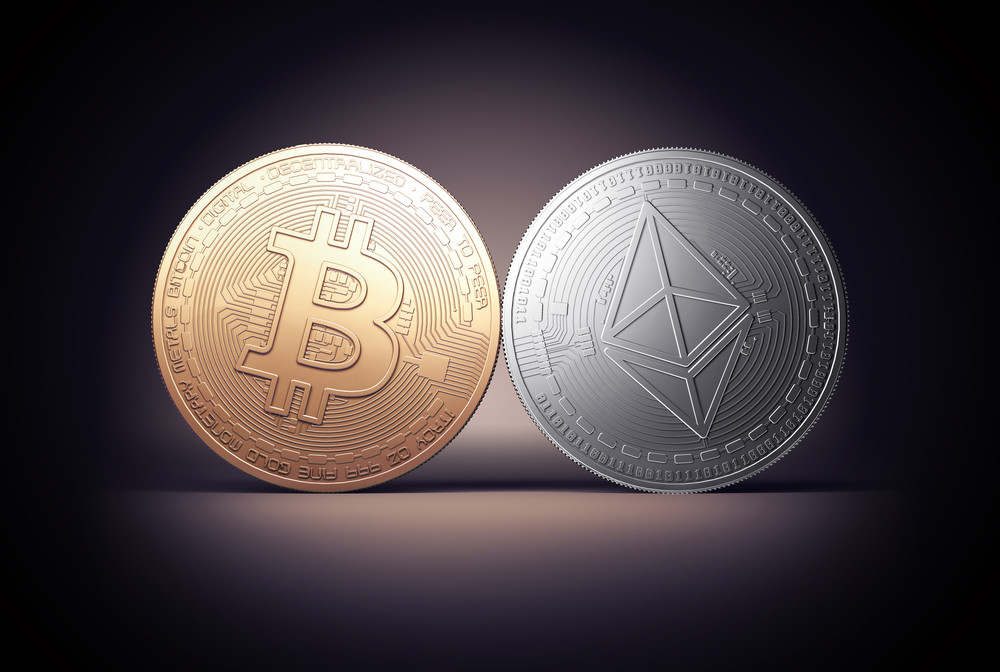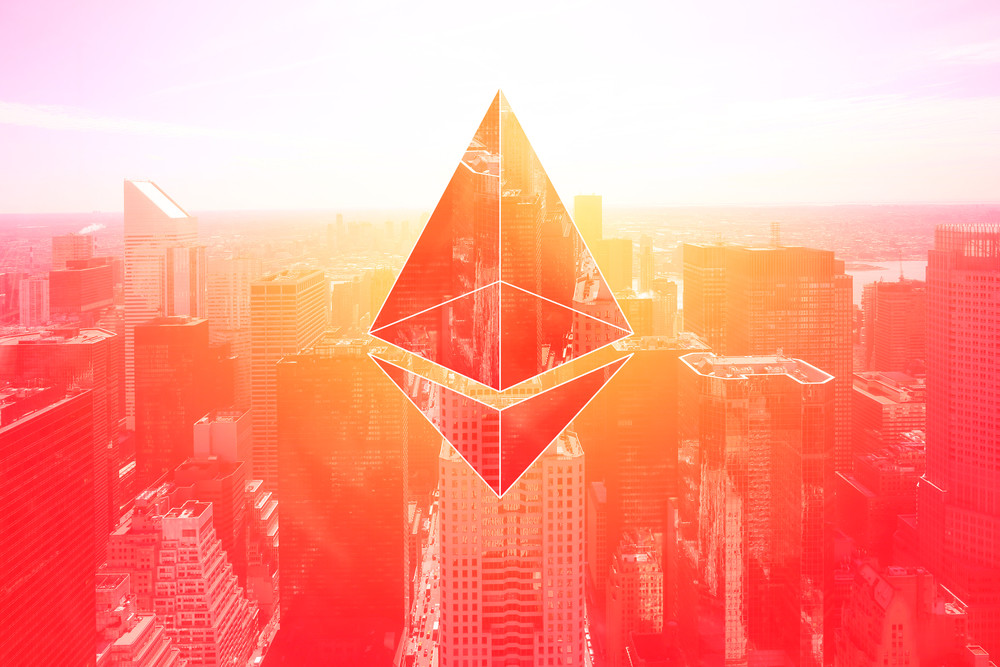What is the blockchain? Among other things, it is one of the buzzwords of late. The chain of blocks is also a concept that poses a huge revolution in our economy and all areas.
Understanding what this chain of blocks is is not that difficult, and since this concept is being used more and more, we wanted to do a kind of quick introductory course to the blockchain to explain what it is, how it works, and what is the revolution it brings the blockchain.
Farewell, Mr. (banker) intermediary
Let’s get into a situation. The normal thing is that if a person named, for example, Mariano wanted to send 1,000 euros to another person named, for example, Luis, the normal thing is the operation is carried out through a bank. That bank acts as an intermediary for that and many other transactions, effectively centralizing the movement of capital from one place to another.

Mariano would ask his bank to withdraw 1,000 euros from his account and transfer it to Luis’s account: in just a few hours (depending on the bank, of course), that bank will have noted the transaction in his account, subtracting 1,000 euros from his account and notifying the other bank that it must add 1,000 euros to Luis’s account. Someone at Luis’s bank (by now, we already know that someone is a computer programmer) will note that in Luis’s account, there are 1,000 more euros from Mariano’s bank account.
This management has not required a transfer of bills from one place to another, but there have simply been one or two banks in charge of making money go from one to another with a simple change in the balances of their accounts. Everything was fantastic, except for one problem:
Neither Mariano nor Luis controls the process, of which only those banks have all the information. Both depend on those banks and how they do things to complete that transaction. They are subject to their conditions (and their commissions).
Hello blockchain
That is where the block chain comes in, eliminating intermediaries and decentralizing all management. The control of the process belongs to the users, not to the banks —we are still talking about money, but the example can be extrapolated to other types of transactions—and they are the ones who become part of a huge bank with thousands, millions of nodes, each of whom becomes a participant and manager of the bank’s account books.

What, then, is the chain of blocks? Well, a gigantic account book in which the records (the blocks) are linked and encrypted to protect the security and privacy of the transactions. In other words, it is a distributed and secure database (thanks to encryption) that can be applied to all types of transactions that do not necessarily have to be economic.
This chain of blocks has an important requirement. Several users (nodes) must be in charge of verifying these transactions to validate them and thus the block corresponding to that transaction (in each block, there is a large number of transactions that, yes, is variable). ) is recorded in that gigantic ledger.
This is how a transaction works in the chain of blocks
The process is relatively simple, but as we say, it involves more people. Now Mariano and Luis are not alone and will be part of a large group of users who are in charge of verifying that the entire process occurs as it should.
Suppose Mariano wants to withdraw a Bitcoin from his account to give it to Luis. In that case, he first notifies everyone with a peculiarity: nobody knows that Mariano is Mariano and that Luis is Luis. They only know that from a digital wallet (what would be a bank account), they want to transfer that amount (which is known) to another.
Mariano, therefore, warns of his intentions, but without revealing his identity: “Hey, guys, I want to send a bitcoin from my wallet to this other one; please update your account books!”. When sending that message, all network users first check that thatMarianthe source wallet has enough money to send to the destination wallet. If so, everyone writes down that transaction, which becomes completed and part of the transaction block. Of course: they are not yet definitively registered in that database.
As time goes by, more and more transactions complete and move into that block, which has a limited capacity that depends on the structure of the blockchain and the size of each transaction. When a block no longer supports transactions, an important moment arrives: “validating” or “sealing” it, which users do when mining Bitcoin.
I’m a miner♫♪
This block mining consists of carrying out a series of complex calculations that require time and (increasingly) electricity. Still, when the process is completed, those blocks are permanently registered in that chain of blocks. They cannot be modified without being altered by all the linked blocks, an operation that would also require validat

In this P2P network, the miners receive notifications of new transactions and gather them into a new block, but they also do so by competing with other miners, because the first one to create a valid block and seal it receives bitcoins ( if they are mining bitcoins, of course). for that service. Thanks to the use of a common chain of blocks that is synchronized between the nodes, the irreversibility of the transactions is achieved, which allows nobody to “trick” the system or carry out fraud to benefit, modifying the account book to divert money (bitcoins). from one place to another without others knowing.
Adding new blocks is an increasingly expensive process, which usually makes miners work in groups (the famous “pools” that work similarly to a cooperative) instead of working by themselves (“solo mining”, with very low chances of success/reward ). When one of the miners solves the cryptographic problem represented by the calculations to “seal” a block, he notifies the others, who verify that this is indeed the case and add that block to the complete chain of blocks they have on their computers.

That ledger is not only distributed and secure: linked blocks (hence the blockchain) have an (encoded) hash pointer linking to the previous block, plus a timestamp and transaction data. , and that information is public. What does that mean? Although it protects its users’ privacy, the block chain allows for controlling the traceability of those transactions.
Or what is the same: it allows us to know all the way that the bitcoin of the portfolio that belongs to someone (in this case to Mariano, although the rest does not know his identity of the users) has followed before reaching the portfolio of another someone (of Luis, although the rest does not know his identity of the users).
The design of the blockchain itself has clear advantages, and for example, confirms that each unit of value (for example, each bitcoin) has only been transferred once, which avoids the traditional problem of double spending on digital currencies or with counterfeit money, which reduces the trust of users in that currency and also in its circulation.
Of ICOs and blockchains
One concept that appears the most when talking about cryptocurrencies and blockchains is that of ICOs, Initial Coin Offerings.

An ICO is how we explain in depth a way of financing a business project that instead of offering shares offers virtual tokens, or what is the same, new cryptocurrencies.
These new cryptocurrencies have some hypothetical value due to their scarcity and demand and are directly associated with the business project that created them, as in well-known examples such as the Brave browser: if that project succeeds, the cryptocurrencies on which it was based financing gain value and that ends up offering an interesting return on investment for investors.
The operation is therefore similar to that of public offerings, but instead of buying shares of a company —one that also has a product on the market and that has gone through rigorous financial controls before being able to make its IPO— we buy cryptocurrencies in an operation with a much more uncertain format, without any regulation and in which we are basically “betting” on the future of that business project with much less evidence or guarantees that future success will occur.
The speculative component, as in everything that currently surrounds cryptocurrencies, is very high, and, some describe ICOs as the biggest scam ever seen, but there are also clear defenders of an increasingly attractive financing model.
All these new cryptocurrencies are supported by a chain of blocks that supports the structure of this new virtual token. The most used is that of Ethereum due to its versatility and the ease that this platform offers. A developer recently explained how to easily create one of these blockchains from Geth, one of the best-known implementations (in this case, in the Go language, hence the name, “Go Ethereum”) of the Ethereum protocol.
The chain of blocks beyond the economy
Although the chain of blocks is closely related to the new cryptocurrencies or cryptocurrencies, it is logical to wonder if this system would be valid for other types of transactions, and the answer is a resounding yes .

That is what the Ethereum platform has been trying to achieve since its inception, which has its chain of blocks (you can look at it on sites like Etherscan.io ) and its currency, called Ether. Unlike Bitcoin, the transactions here are smart contracts — programmers love this concept — which can be more or less complex and allow all kinds of transactions to be defined.
As with Bitcoin, the beauty of those transactions is that they will remain on the blockchain, unalterable and accessible for the life of that blockchain. If we go to the extreme, Ethereum could replace any middleman, replacing products and services that rely on third parties to be fully decentralized.
Of course, this is just one of the alternatives that originated with the chain of blocks as a protagonist, and many ideas try to exploit the benefits of technology with a virtually unlimited scope. Let’s see some examples:
- R3 Consortium – The financial entities that many are trying to replace with Bitcoin or Ethereum have created the R3 Consortium to learn how to take advantage of the blockchain in traditional financial systems. One of the first problems in the application of this scheme is the anonymity provided by the design of the blockchain, something that they have solved with the so-called “authorized ledger” (‘permission ledger’), a very peculiar variant of the Bitcoin blockchain, for example, which does identify the users who add blocks and which means that system transactions can only be consulted by certain parties.
- Property Registry: The Japanese government has started a project to unify the entire urban and rural property registry with blockchain technology, allowing an open database in which the data of the 230 million could be consulted. Of farms and 50 million buildings are estimated to exist in the Asian country. In Dubai, they are planning something very similar.
- Payments in the real world: a startup called TenX has created a prepaid card that can be topped up with different cryptocurrencies and then paid with it anywhere as if that card had conventional money, regardless of whether or not that establishment accepts these types of currencies. Virtual.
- Carsharing: EY, a subsidiary of Ernst & Young Global Ltd, is developing a blockchain-based system that allows companies or groups of people to easily access a carsharing service. The so-called Tesseract would make it possible to register the vehicle’s owner and the vehicle’s user and generate costs based on insurance and other transactions in this type of service.
- Cloud Storage – Normally, storage services are centralized to a specific provider, but Storj company wants to decentralize this service to improve security and reduce dependency on that storage provider.
- Digital Identity – Recent gigantic security breaches and data breaches have made managing our identities a real problem. The chain of blocks could provide a unique system to validate identities in an irrefutable, secure, and immutable way. Many companies are developing services in this field, and all believe that applying blockchain technology for this purpose is an optimal solution.
- Music: although some critics affirm that this option is not valid, some affirm that music distribution could undergo a complete revolution if a system based on the chain of blocks to manage its reproduction, distribution, and enjoyment could be implemented. Spotify itself is betting big on its blockchain.
- Public/government services: another of the most interesting fields of blockchain application is in public services, which could thus boast absolute transparency. The areas of activity are multiple: from license management, transactions, events, movement of resources and payments, and property management to identity management. The massive data theft at Equifax has led some to propose replacing social security numbers in the United States with a blockchain-based system. There are even initiatives to “decentralize government”, and Bitnationis one of those projects that try to call us to become “citizens of the world.”
- Social security and health: although it could be included within the aforementioned public services, public health could undergo a true revolution with a blockchain system that would record all kinds of medical histories and solve one of the classic health management problems.
- Authorship management: although related to what was mentioned in the world of music, Ascribe is a platform that tries to help creators and artists take ownership of their works through the blockchain. There are many other platforms in this field ( Bitproof, Blockai, Stampery, for example) that, among other things, allow you to create stores where original works can be purchased safely and easily.
These are just a few examples of the application of the blockchain to all kinds of fields. Still, there are many more: the versatility of this technology is so enormous that it is difficult to think of an area that this idea cannot transform.
At the moment, yes, all these ideas are only projects in full development, so the revolution, although possible, seems far away, especially when intermediaries (in all areas) have become an integral part of the economy and society. Decentralizing all these industries is much more complex than it seems, especially since those same intermediaries will try to reject these changes or adapt them to their own needs.

Sharlene Meriel is an avid gamer with a knack for technology. He has been writing about the latest technologies for the past 5 years. His contribution in technology journalism has been noteworthy. He is also a day trader with interest in the Forex market.












